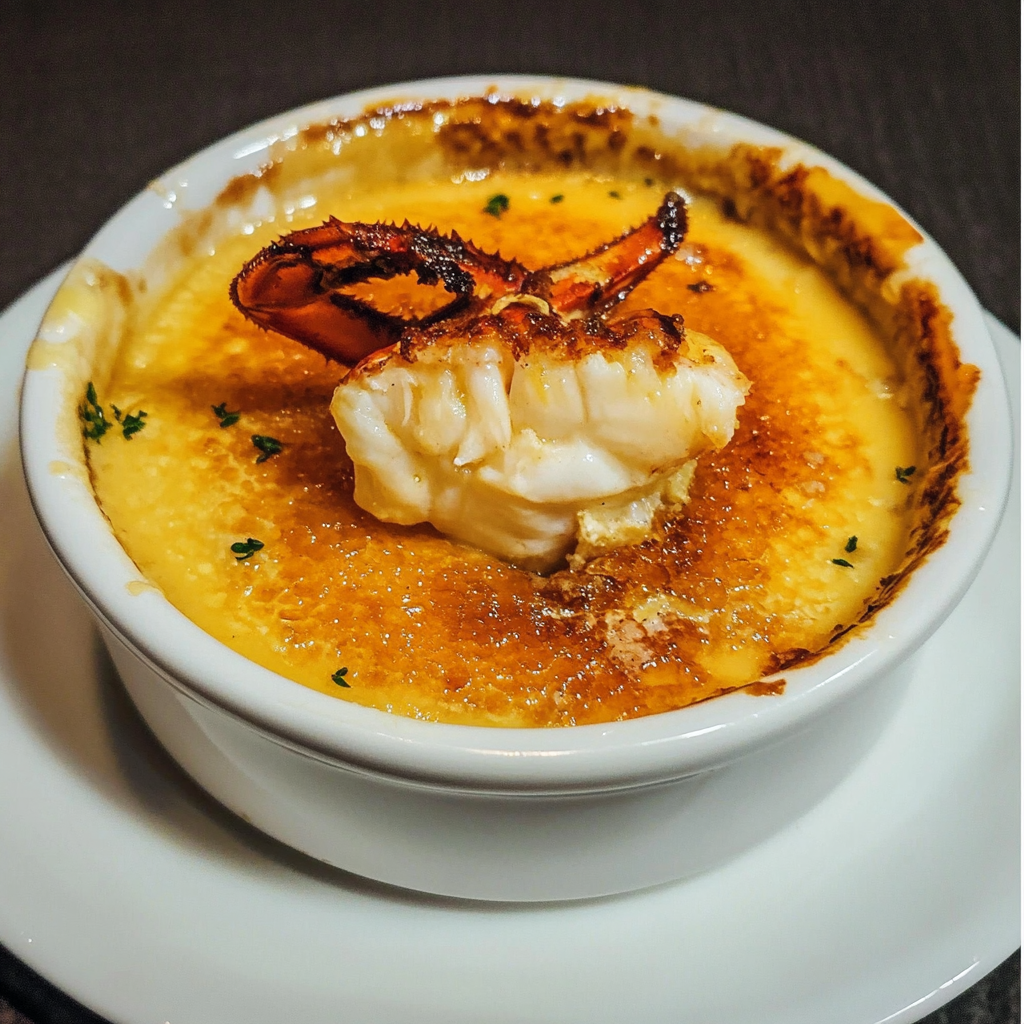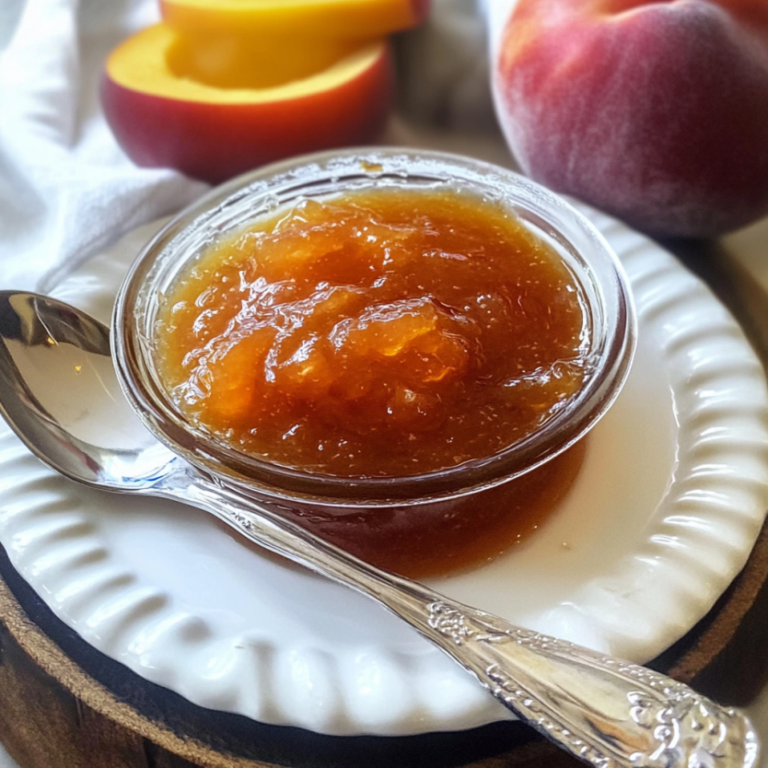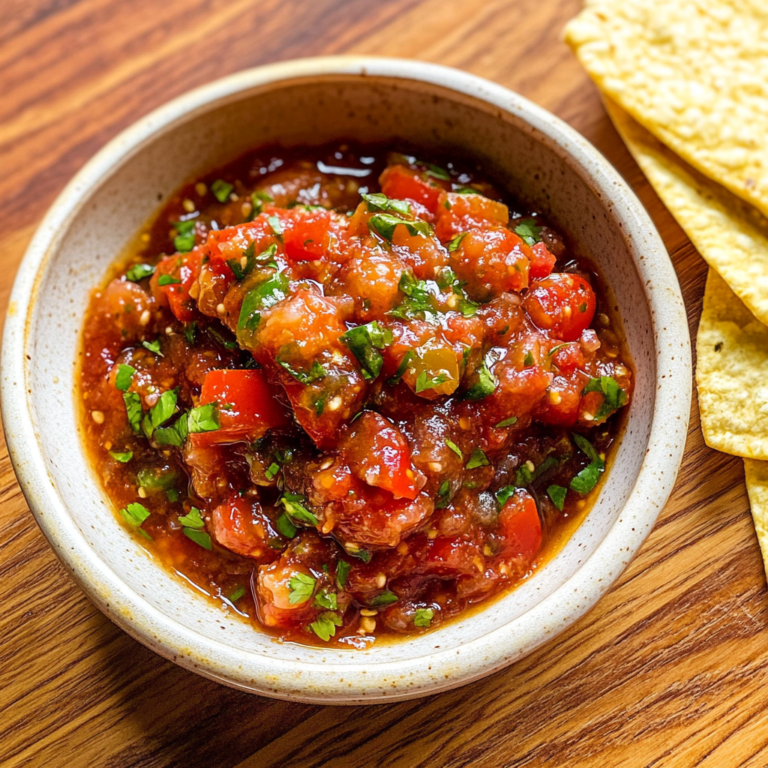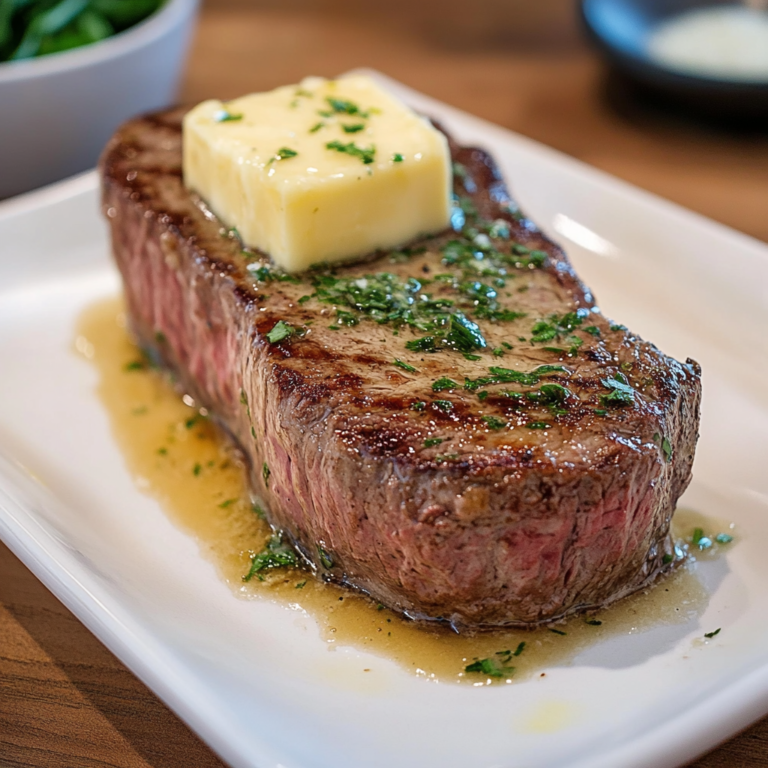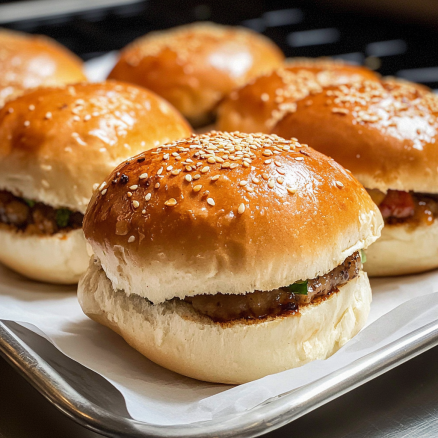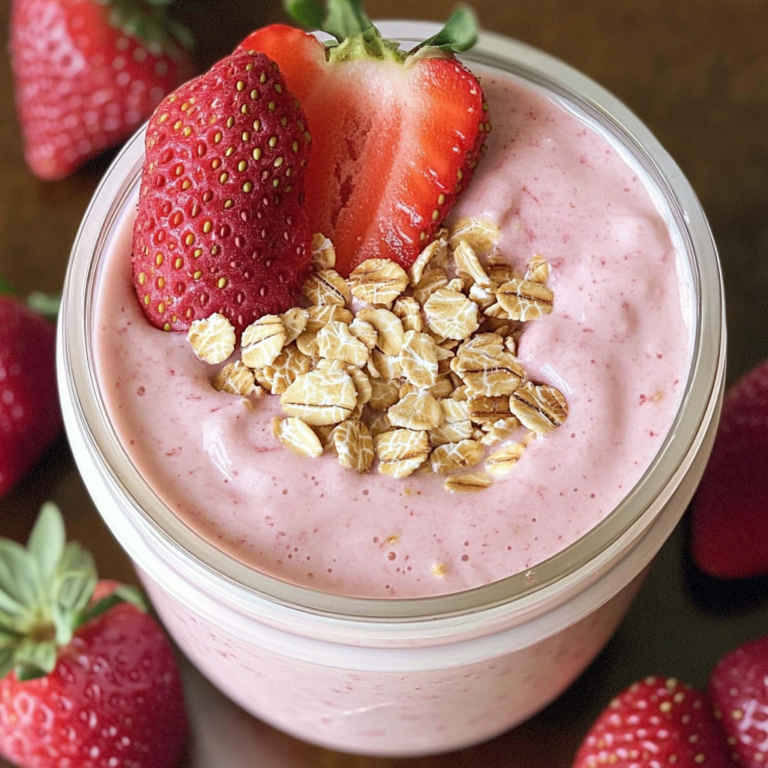Crab Brûlée
Crab Brûlée might sound unconventional at first. The name brings to mind the classic French dessert, crème brûlée, known for its creamy custard base and crisp, caramelized sugar top. But this luxurious dish takes a savory spin on the concept. By replacing sweet vanilla custard with a rich, crab-infused cream mixture, and then finishing it with a brûléed topping, it becomes a stunning appetizer or light entrée.
Unlike typical seafood starters, Crab Brûlée combines elegance and surprise in every bite. It’s a brilliant showcase of fusion cuisine—where French technique meets coastal flavor. The result is a creamy, umami-packed custard, laced with lump crab meat, chives, and a hint of nutmeg, sealed under a golden sugar crust. Serve it warm or chilled, it will always make an impression.
Perfect for dinner parties, Valentine’s Day meals, or a showstopper at your next brunch, Crab Brûlée isn’t just food—it’s an experience.
Overview of Crab Brûlée
The phrase Crab Brûlée refers to a culinary crossover: savory seafood meets French custard technique. Though not commonly found on restaurant menus, it has gained popularity among food bloggers and modern chefs looking to innovate.
What makes Crab Brûlée so appealing is its luxurious texture and unexpected combination of flavors. The creamy custard is elevated by the salty sweetness of crab, while the brûléed topping adds crunch and contrast. It’s versatile too—you can serve it in ramekins as a starter or spoon it into tartlets for a creative hors d’oeuvre.
This dish challenges the notion that brûlée must always be sweet. With Crab Brûlée, you’re embracing the savory side of French classics.
Brief History and Cultural Significance
The origins of crème brûlée date back to 17th century France, where it was first documented in François Massialot’s cookbook. The dish became a staple of fine French dining, evolving over centuries from a simple custard to a showy dessert finished tableside with fire.
Savory versions, like Crab Brûlée, are a more recent culinary innovation. The rise of molecular gastronomy and fusion cooking in the 21st century has encouraged chefs to rethink traditional dishes, giving way to creative reinterpretations like foie gras brûlée, cheese brûlée, and now crab.
This reinterpretation blends classic culinary technique with coastal flavors, making it a modern icon of gourmet seafood. It showcases how far culinary creativity can go while still honoring time-tested traditions.
Preparation Phase & Tools to Use
Creating Crab Brûlée requires precision, patience, and the right tools. It’s not difficult, but success depends on methodical execution.
Prep Time: 25 minutes
Cook Time: 35 minutes
Cool Time: 30 minutes
Total Time: 1 hour 30 minutes
Servings: 4
Yield: 4 individual ramekins
Essential Tools and Equipment for Crab Brûlée
-
Mixing bowls – For preparing and whisking ingredients.
-
Whisk – Essential for smooth custard texture.
-
Saucepan – To gently warm the cream mixture without curdling.
-
Fine-mesh sieve – For straining the custard and ensuring a silky consistency.
-
Ramekins (4 oz.) – The perfect serving size for custards.
-
Baking dish – Used to create a gentle water bath.
-
Kitchen torch or broiler – For that signature brûléed sugar topping.
Importance of Each Tool
Using the right equipment ensures both safety and perfection in texture of the Crab Brûlée.
-
Mixing Bowls & Whisk: Whisking yolks and cream properly prevents lumps and ensures a smooth, even base.
-
Saucepan: Heating cream too quickly can scorch it. A thick-bottomed pan distributes heat evenly.
-
Sieve: A crucial step—removing solids ensures the custard is velvety smooth.
-
Ramekins: Deep enough for a rich custard, small enough to keep portions elegant.
-
Water Bath (Bain-Marie): This allows the custard to cook gently without overcooking or cracking.
-
Torch: The brûlée crust needs intense, even heat. A broiler can work too, but a torch gives you more control.
Preparation Tips
-
Use fresh, high-quality lump crab meat. Avoid canned crab unless it’s premium grade.
-
Warm cream slowly and stir continuously to prevent burning.
-
Temper the yolks by slowly introducing the hot cream while whisking—this prevents scrambled eggs.
-
Strain the custard every time. It removes curdled bits or chalazae (stringy egg white).
-
Chill thoroughly before torching. The sugar will brûlée better on a cold surface.
-
Serve with a crunchy side like crostini or a crisp salad for textural contrast.
Ingredients List
-
1 cup fresh lump crab meat
-
5 large egg yolks
-
2 cups heavy cream
-
½ teaspoon kosher salt
-
¼ teaspoon ground white pepper
-
⅛ teaspoon grated nutmeg
-
1 tablespoon finely chopped chives
-
2 tablespoons granulated sugar (for topping)
Step-by-Step Instructions
-
Preheat your oven to 325°F (163°C).
-
Prepare your water bath: Line a baking dish with a kitchen towel. Arrange ramekins on the towel so they don’t slide.
-
Whisk egg yolks: In a medium bowl, whisk the yolks until fully blended and slightly thickened.
-
Heat cream: In a saucepan, combine heavy cream, salt, pepper, and nutmeg. Warm over medium heat until just starting to simmer—don’t let it boil.
-
Temper the yolks: Slowly pour about 1/2 cup of the hot cream into the yolks while whisking. Continue until half the cream is incorporated.
-
Combine fully: Pour the tempered yolk mixture back into the saucepan with the remaining cream. Stir to combine.
-
Strain the mixture: Pass the custard through a fine-mesh sieve into a large bowl or pitcher.
-
Fold in crab and chives: Gently mix in crab meat and chives without breaking up the crab too much.
-
Fill ramekins: Pour the mixture evenly into your ramekins.
-
Create water bath: Carefully add hot water to the baking dish until it reaches halfway up the sides of the ramekins.
-
Bake: Place the dish in the oven and bake for 30–35 minutes, or until custards are just set but slightly jiggly in the center.
-
Cool: Remove ramekins from the water bath. Let them cool at room temperature for 20 minutes, then refrigerate for at least 2 hours.
-
Brûlée the top: When ready to serve, sprinkle a thin layer of sugar on each custard. Use a kitchen torch to caramelize the sugar until it forms a golden crust. If using a broiler, keep a close eye to avoid burning.
Side Dish Recommendations
When serving Crab Brûlée, pairing it with the right sides enhances the experience. The dish is rich, creamy, and subtly sweet from the crab. This opens the door to a range of accompaniments—crisp, acidic, earthy, or herbal—to balance the texture and flavor. Whether served as an appetizer or light main course, these sides will complement it beautifully.
Grilled Asparagus with Lemon Zest
The natural bitterness of asparagus and the zing of lemon zest make this a refreshing, clean companion. Lightly charred spears drizzled with olive oil and lemon provide crunch and brightness that contrast the silky brûlée texture. A sprinkle of shaved Parmesan or toasted almonds can add elegance and extra depth.
Herbed Couscous
Fluffy, fast, and endlessly adaptable, couscous absorbs flavors beautifully. Infuse it with parsley, mint, and dill for a Mediterranean feel. A squeeze of lemon and a touch of olive oil bring it alive. Its subtle taste and airy texture support Crab Brûlée without overpowering it.
Roasted Cherry Tomatoes with Balsamic Glaze
Sweet, juicy tomatoes burst with flavor and balance the umami of crab. Roast them until caramelized, then finish with a touch of balsamic glaze. This side dish adds a sweet-savory element that mirrors the sugar topping on the brûlée.
Crusty Sourdough Crostini
Serve slices of grilled sourdough brushed with garlic butter alongside the brûlée. The crisp texture adds contrast, and the sour tang pairs with the richness of crab. These crostini also act as edible utensils for scooping up custard—practical and gourmet.
Microgreens & Citrus Vinaigrette Salad
A light salad with peppery arugula, microgreens, or baby spinach dressed in a citrus vinaigrette offers contrast and freshness. Thinly sliced fennel or grapefruit segments add aromatic and acidic notes. The salad refreshes the palate, especially after each brûléed bite.
Truffled Mashed Cauliflower
If you’re leaning toward indulgence, offer a rich but low-carb side. Mashed cauliflower whipped with cream, garlic, and a hint of white truffle oil creates a luxurious accompaniment. Its earthiness mirrors the depth of the crab custard, without weighing down the plate.
Nutritional Information & Health Benefits
Although Crab Brûlée feels decadent, it offers surprising nutritional benefits, especially when made with fresh, quality ingredients. Let’s break it down by its main components—crab, cream, and eggs.
Rich in Protein
Crab meat is a lean source of protein. A single serving contributes significantly to daily protein intake, aiding in muscle maintenance and satiety. Combined with egg yolks, the dish provides high biological value protein—meaning it’s efficiently used by the body.
Packed with Vitamins and Minerals
Crab is a nutritional powerhouse rich in:
-
Vitamin B12, essential for nervous system health and DNA production.
-
Zinc, vital for immune function and wound healing.
-
Selenium, a strong antioxidant that supports thyroid health.
Egg yolks provide:
-
Vitamin A, for skin and vision health.
-
Choline, which supports liver function and brain development.
-
Iron, critical for oxygen transport in blood.
Contains Omega-3 Fatty Acids
As a seafood-based dish, Crab Brûlée offers omega-3 fatty acids. These essential fats have been linked to reduced inflammation, improved brain function, and heart health support. While not as abundant as in salmon or mackerel, crab still contributes a healthy dose.
Moderation with Cream and Yolks
Heavy cream and egg yolks introduce saturated fat and cholesterol. However, when enjoyed occasionally and paired with lighter sides, the dish fits comfortably into a balanced diet. Use organic cream and pasture-raised eggs for added nutrients and better flavor.
Low Carb and Gluten-Free
The custard itself contains minimal carbohydrates and no gluten, making it suitable for low-carb and gluten-free diets. If served without bread or crostini, it’s also keto-friendly.
Common Mistakes to Avoid & How to Perfect the Recipe
Crab Brûlée requires finesse. Avoiding common pitfalls is key to achieving restaurant-quality results at home. Here are the top mistakes and how to sidestep them.
Mistake 1: Overcooking the Custard
Overbaking causes the custard to become rubbery or crack. Aim for a gentle wobble in the center when you remove it from the oven. The residual heat will carry it to perfection as it cools.
Tip: Use a water bath to buffer the oven’s heat and cook the custard evenly. The water should be hot (not boiling) when added.
Mistake 2: Scrambling the Yolks
Pouring hot cream into eggs too fast can scramble them, leaving lumps in the custard. The process of tempering—slowly whisking hot liquid into yolks—is vital.
Tip: Whisk constantly and pour slowly. If in doubt, strain the custard before baking.
Mistake 3: Skipping the Sieve
Even well-tempered custards may have small curds or egg strands. Straining ensures smoothness and a refined texture.
Tip: Always use a fine-mesh sieve over a bowl or large measuring cup before filling the ramekins.
Mistake 4: Using Inferior Crab Meat
The flavor hinges on the quality of crab. Canned or imitation crab can taste bland or overly fishy.
Tip: Use fresh lump crab if available. Gently check for shells and pat dry before adding to custard.
Mistake 5: Uneven Caramelization
A thick sugar layer won’t brûlée evenly and may burn on the outside while remaining raw underneath.
Tip: Sprinkle a thin, even layer of sugar. Use a circular motion with a torch, letting each section melt before moving on.
Expert Tips, Notes & Serving Suggestions
Preparing a dish like Crab Brûlée is about more than just technique—it’s also about refinement and finesse. Here are pro-level tips and notes that help elevate your execution and ensure the result is consistently flawless.
Use a Culinary Torch Over a Broiler
While broilers work in a pinch, a culinary torch gives you precise control. It allows you to caramelize the sugar without reheating or curdling the custard underneath. Choose a butane torch with a focused flame for even results.
Dry the Crab Thoroughly
Moisture from crab meat can dilute the custard or make it runny. Gently pat the crab with paper towels before folding it into the mixture. This helps maintain the creamy consistency and prevents watery pockets.
Go Beyond Chives
While chives add mild sharpness, you can experiment with other herbs. Try a few thyme leaves, a sprinkle of tarragon, or even micro parsley for a gourmet presentation. Each herb adds its own aromatic profile that complements the crab.
Flavor Infusions in Cream
Before combining with eggs, infuse the cream with aromatics. Add a small garlic clove, a sprig of dill, or crushed white peppercorns during the heating process. Then strain them out before tempering. This adds complexity to the custard without overwhelming the crab.
Pre-Chill Ramekins
Before baking, chilling the empty ramekins briefly can help slow the heat transfer, reducing the risk of overcooked edges and ensuring a more uniform texture throughout the custard.
Choose the Right Sugar
Not all sugar brûlées the same way. Opt for superfine sugar for a crisp, delicate crust. You can also experiment with light brown sugar for a subtle molasses note, though it tends to melt faster and requires a gentler torching approach.
Let the Torch Rest Between Ramekins
Too much heat from continuous torching can scorch sugar and cause bitter notes. Give the torch a quick pause and let it cool slightly before proceeding to the next ramekin. This allows for greater control and precision.
Presentation Matters
Garnish with a crab leg for visual drama, or add microgreens and edible flowers for a modern, fresh vibe. Serve the brûlée on slate plates or alongside seaweed crisps for a thematic touch.
How to Store & Reheat Crab Brûlée
Because Crab Brûlée is both custard and seafood-based, it requires careful storage to maintain quality and food safety.
Refrigeration
Once baked and cooled, store the ramekins in the refrigerator covered loosely with plastic wrap. Avoid airtight lids—they can trap moisture and soften the brûlée.
-
Ideal storage time: up to 2 days.
-
Do not brûlée the sugar topping until just before serving. Store custards plain.
Freezing (Not Recommended)
Freezing Crab Brûlée is not advised. The texture of the custard can separate, and crab meat may become watery and rubbery once thawed. The integrity of both custard and crust is compromised.
Reheating Instructions
Brûlée is best served cold or slightly chilled with a warm sugar topping. However, if you need to gently reheat:
-
Preheat oven to 275°F (135°C).
-
Place ramekins in a water bath.
-
Heat for 10–15 minutes or until just warmed through.
-
Avoid microwaves—they unevenly heat the custard and can cause curdling.
Torch the sugar immediately before serving.
FAQs About Crab Brûlée
Can I make Crab Brûlée ahead of time?
Yes, you can prepare and bake the custard up to two days in advance. Store them covered in the fridge without the sugar topping. Add sugar and torch right before serving.
What type of crab meat should I use for Crab Brûlée?
Fresh lump crab meat is ideal. It offers the best texture and flavor. Avoid imitation crab or canned crab packed in brine, which can overpower the custard and add excess moisture.
Is Crab Brûlée served hot or cold?
It’s served chilled or slightly cool, with the caramelized sugar crust added just before serving. The contrast between cold custard and warm topping is part of the appeal.
Can I add cheese to the recipe?
Some chefs add a touch of grated Gruyère or Parmesan to enhance the umami. If using cheese, keep the amount small to avoid overpowering the crab flavor.
How do I get the sugar crust perfect?
Use a thin, even layer of superfine sugar and hold the torch 2–3 inches above the surface. Move the flame in circles until the sugar melts and caramelizes. Avoid staying in one spot too long.
What wines pair best with Crab Brûlée?
A crisp, dry white wine like Sauvignon Blanc or a lightly oaked Chardonnay complements the richness of the dish. Sparkling wines also work beautifully, cutting through the creaminess with bubbles and acidity.
Can I make a vegetarian version?
Yes, omit the crab and instead add sautéed mushrooms, caramelized shallots, or a roasted corn puree. Use the same base custard technique but adjust seasoning to match the new flavors.
What are some flavor twists I can try?
-
Lemon zest or yuzu juice for brightness
-
Smoked paprika for a Spanish spin
-
Old Bay seasoning for a classic crab-boil flavor
-
A few drops of truffle oil post-baking for earthy aroma
Is it safe to use a torch in the kitchen?
Yes, with proper care. Always keep the torch upright, use it in a well-ventilated area, and never leave the flame unattended. Let it cool fully before storing.
Can I serve Crab Brûlée as a main course?
Absolutely. Increase portion size slightly, pair with roasted vegetables or couscous, and serve in larger ramekins or shallow baking dishes.
Final Thoughts
Crab Brûlée is more than a recipe—it’s a culinary statement. A testament to innovation, it breaks the mold of what brûlée can be. Rich and delicate, sweet and savory, humble yet sophisticated—it’s the kind of dish that captures attention from the first spoonful to the last.
Crafting this dish requires care and confidence. Every step—from tempering the yolks to torching the sugar—demands your full presence. But the payoff is immense: a velvety custard with elegant crab notes, topped with a glistening caramel shell that cracks with the lightest tap.
Whether you’re serving Crab Brûlée as a luxe appetizer, a conversation-starting main course, or the star of a holiday menu, Crab Brûlée belongs in your culinary repertoire. It’s the perfect marriage of technique and creativity. It invites your guests to pause, savor, and experience something extraordinary.
Let this Crab Brûlée remind you that the kitchen is a place of artistry. And every once in a while, it’s worth lighting a flame to bring something beautiful to life.
